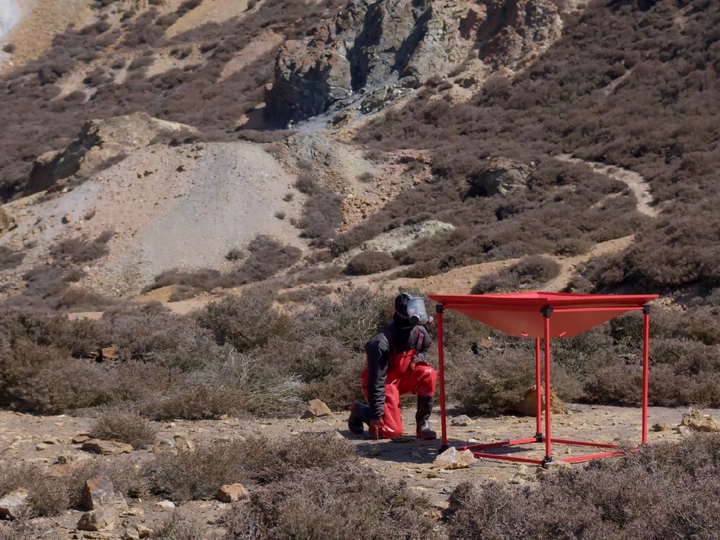FILM AS SITE

A recent graduate of the RCA MA Architecture programme, Thomas worked largely at the intersection of film and architecture. Spanning a range of media, from narrative and drawing, to performance and film, his practice also involves the production of large scale physical instruments that prompt and facilitate such spatial explorations. Across these investigations, new modes of portrayal and depiction are continually sought, be that within urban protests or across toxic landscapes, with the aim to offer observational techniques as a form of deliberate design intervention.
His passions also lie within the socio-political agenda of architecture, evident from his dissertation, ‘Architecture and Conflict: Understanding the Role of the Architect’. His wish is to pursue a career that will allow him to continue learning about how to design in response to the multiple perspectives and requirements of diverse communities. He seeks to contribute to a practice of architecture that is responsive in this way, placing egalitarian values uppermost, and one that does so sustainably, safeguarding possibilities for our shared future.
What is the relevance of the film tool for architectural design?
This constantly expanding body of work has a sense of urgency, driven by the need to orientate as an architect within complex contemporary contexts via alternative creative methods.
While largely process and field based, the work contains elements of performance and plays with the art of dramatisation. Cinematic methods and techniques are proposed in order to expand the discipline of architecture, and ultimately offer new modes of architectural portrayal and depiction, be that across toxic landscapes or within urban protests, that aim to offer observational techniques as a new, more radical set of learning tools.
The work navigates tensions that arise at the intersection of film and architecture, exploring both how the act of filmmaking can become a spatial site to examine and how moments of resistance might be alternatively documented, in ways that challenge their otherwise familiar and repetitive modes of representation.
One particular episode within the body of work considers a damaged landscape rendered toxic over centuries of discovery, examination and extraction. A series of short films offer alternative lenses through which to observe and critique the relationship of humankind with the land.
A second episode within this body of work employs a set of speculative optical devices within urban protests as a means to extend the event rather than represent it. They simultaneously record and project, distorting the machine, user and surroundings to both protect the identity of those involved as well as offer a beacon to follow.
This body of work proposes film as the key tool for an architect to employ when navigating the complex contemporary environments we find ourselves surrounded by. I wish to share some of the methods and techniques I have developed and work with others who find this intersection fascinating and a necessity.